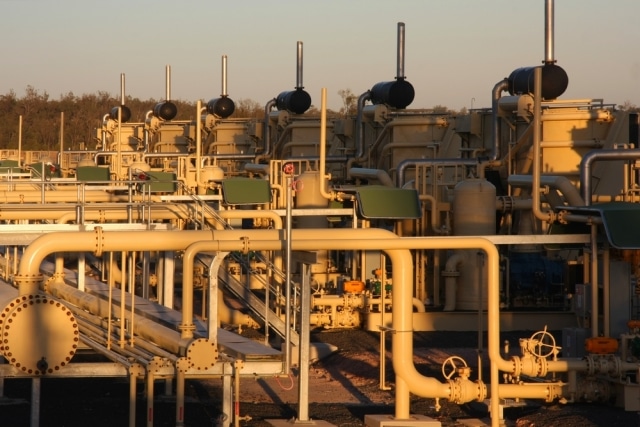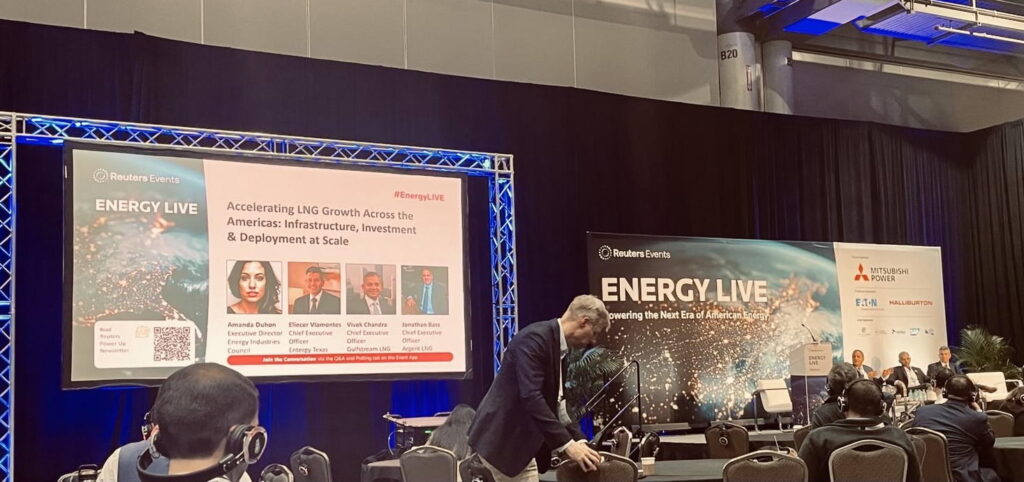The U.S. Environmental Protection Agency has been sued over toxic chemicals released into the air, water and land by the oil and gas industry, a coalition of nine environmental and open government groups announced today.
The extraction of oil and gas releases more toxic pollution than any other industry except for power plants, according to the EPA‘s own estimates, the coalition, which filed the lawsuit this morning in the U.S. District Court for the District of Columbia, noted.
But the industry has thus far escaped federal rules that, for over the past two decades, have required other major polluters to disclose the type and amount of toxic chemicals they release or dispose. The Toxic Release Inventory (TRI) is a federal pollution database, established under the Emergency Planning and Community Right to Know Act, and can be used by first-responders in the event of a crisis as well as members of the general public.
“People deserve to know what toxic chemicals are being used near their homes, schools and hospitals,” said Matthew McFeeley, staff attorney for the Natural Resources Defense Council.
“For too long, the oil and gas industry has been exempt from rules that require other industries to disclose the chemicals they are using, so communities and workers can better understand the risks. It’s high time for EPA to stop giving the oil and gas industry special treatment.”
Roughly one in four Americans live within a mile of an oil or gas well, making the air emissions from the industry a matter of local concern to a fast-growing number of families.
Adam Kron, lead attorney in the lawsuit, told DeSmog that, given emerging evidence linking proximity to gas wells to health issues like respiratory disorders or skin conditions, residents in shale fields could find TRI data useful. “For those people, they might not know what’s causing it, they might not know what’s being released,” he said. “You can bring the print-out to your doctor,” he added.
“The information is just vital to people who live near those sites,” Mr. Kron added.
The lawsuit follows a petition that the coalition of groups filed in October 2012, requesting that EPA require the oil and gas industry to participate in the TRI.
“In 2012,” the groups, noted, “EPA estimated that the oil and gas extraction industry emits at least 127,000 tons of hazardous air pollutants every year, all of which are TRI-listed toxic chemicals. These include benzene (a carcinogen), xylenes (which can cause headaches, fatigue, and cardiovascular problems), and hydrogen sulfide (which can cause nausea, coughing, and in high concentrations, rapid death).”
There are signs that the true levels of toxic releases are higher than EPA‘s official estimates. Air emission data, gathered by the Environmental Integrity Project from six major drilling states (Colorado, Louisiana, North Dakota, Pennsylvania, Texas, and Wyoming) showed a combined 8.5 million tons of TRI-listed toxic chemicals released annually, a report by the group released in January 2014 concluded.
That review focused on 395 oil and gas extraction facilities, which each released over 10,000 pounds of at least one toxic chemical. Roughly half of those sites had emitted over 10,000 pounds, the normal threshold for TRI reporting, for two or more years in a row, and over half were in Texas. These high-polluting sites included compressor stations for natural gas pipelines, processing plants, wastewater processing facilities, and emissions also spew from drilling and fracking operations, the groups found.
“Our research shows that many of these oil and gas plants emit tens of thousands of pounds of toxic pollutants every year, but that data was hard to get and incomplete,” said Eric Schaeffer, executive director of the Environmental Integrity Project when research results were announced last year. “We need this industry to report that pollution to the Toxics Release Inventory where everyone can see it –– just like chemical plants and other facilities have done for more than 20 years.”
Even using the EPA‘s more conservative estimates, the amount of toxic pollution emitted by the oil and gas industry is enormous. “EPA estimates that the industry emits at least 127,000 tons of hazardous air pollutants every year, including benzene, xylenes, and hydrogen sulfide,” noted a 2012 EPA fact sheet. “This is more than any TRI-reporting industry except electric utilities, and equivalent to thirty percent of the total release of hazardous air pollutants reported to the TRI for 2010.”
The organizations the Environmental Integrity Project is representing in the lawsuit include the Center for Effective Government (formerly known as OMB Watch), the Natural Resources Defense Council, Chesapeake Climate Action Network, Citizens for Pennsylvania’s Future (PennFuture), the Clean Air Council, Delaware Riverkeeper Network, the Responsible Drilling Alliance, and Texas Campaign for the Environment.
Congress established the TRI in 1986 to inform the public about the release of sometimes carcinogenic chemicals from industries in the wake of the deadly 1984 Bhopal disaster in India, in which toxic gases killed thousands of local residents.
The lawsuit, if sucessful, would not directly limit pollution from oil and gas extraction facilities, but it would require information to be made public.
“If knowledge is power, as the proverb goes, then the EPA’s Toxics Release Inventory (TRI) is a powerful tool indeed,” science writer Nancy Bazilchuk noted in a 2006 Environmental Health Perspectives paper. “Firefighters and first responders used this nearly 20-year-old public database of toxic chemical emissions to identify potential contamination hot spots after the floods of Hurricane Katrina. Residents have used it to find out what kinds of pollutants are being emitted by nearby industries. Investment companies use it to evaluate whether or not to purchase a company’s stocks. Even the Internal Revenue Service uses it to collect a pollution tax from companies that release ozone-damaging chlorofluorocarbons.”
In 1996, the EPA decided to “defer” any decision about including oil and gas extraction in the TRI, in part because of a dispute about whether the emissions from each individual well and piece of equipment should be considered separately, or whether all of the fumes from a single well pad should be tallied together. “This was kind of a different industry back then, you didn’t have these major industrialized sites,” Mr. Kron explained.
A similar legal distinction has kept the oil and gas industry exempt from hazardous air pollution regulations under the Clean Air Act, drawing the ire of environmentalists and many who live near well pads who suspect the fumes from fracking and drilling have caused health problems.
As the shale drilling boom has spread across the U.S., those concerns have grown.
“Those living or working closest to wells are at the highest risk,” the NRDC concluded last month after reviewing scientific research. “In addition to the aforementioned health threats, they can also be exposed to diesel particulate matter and other toxics, including carcinogens. As a result, they are also at risk for eye, nose and throat irritation, brain and nervous system problems including headaches, lightheadedness and disorientation, blood and bone marrow damage leading to anemia and immunological problems, reproductive system effects, birth defects and harm to the developing fetus, and cancer.”
Advocates now hope to prod the EPA to require drillers to make basic information about chemical releases available.
“The public disclosures in the Toxic Release Inventory have spurred companies across an array of industries to significantly reduce the toxic wastes they produce,” said Sean Moulton, a director at the Center for Effective Government. “There is no reasonable rationale for exempting the oil and gas industry from these reporting requirements. Citizens have a right to know what wastes are being released in their communities.”
Subscribe to our newsletter
Stay up to date with DeSmog news and alerts






